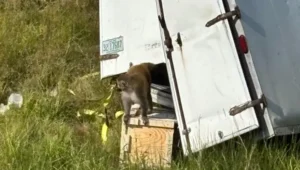Trump's victory promises to radically transform the country's energy and environmental policy.
The victory of Donald Trump as President of the United States was announced this morning. A result that promises to radically transform the country’s energy and environmental policies, with profound implications for oil production, the expansion of offshore wind energy, and policies regarding electric vehicles. His return to the White House opens the door to a series of reforms that could reshape the country’s energy sector, with a particular focus on fossil fuels and environmental deregulation.
Trump has been clear in his campaign promises, highlighting that his administration will seek to reverse many of the environmental policies implemented by his predecessor, Joe Biden, which focused on combating climate change and transitioning to clean energy.
Oil, gas, and drilling: “liberating american energy”
The elected president promises to reactivate drilling on public lands and review restrictions on fossil fuel extraction in order to significantly expand oil and gas production. In particular, Trump aims to lift the moratoriums on drilling in Alaska’s National Petroleum Reserve and reactivate the sale of offshore oil concessions, areas that were restricted under Biden’s administration.
Although Trump could start immediately, it could take up to two years to finalize the necessary environmental studies and fulfill other procedural requirements. Still, major oil companies like ConocoPhillips, Santos Ltd., and Repsol SA are expected to be among the biggest beneficiaries of this shift in U.S. energy policy, according to Transport Topics.

Electric vehicles: end to tax credits and emission restrictions
One of the most important fronts for Trump will be the electric vehicle (EV) policy, which he has promised to reverse. He is particularly focused on Environmental Protection Agency (EPA) regulations that limit emissions from light-duty vehicle exhausts. Trump could use his executive authority to order a review of these regulations, weakening the mandates that require higher sales of electric cars. A similar move might be considered to challenge California’s Clean Air Act.
Additionally, Trump has made it clear that one of his goals will be to eliminate tax exemptions for electric vehicles in commercial fleets and alter policies related to tax credits for the manufacturing of these vehicles. This could slow the growth of the EV market in the U.S. and even exempt foreign-made electric vehicles or those with non-U.S. batteries from restrictions.

Natural gas, clean energy, and power plants
Trump has promised to lift the moratorium on the export of liquefied natural gas (LNG), which would open new commercial opportunities with countries not involved in free trade agreements, benefiting companies such as Venture Global LNG and Energy Transfer.
On the other hand, his victory could create uncertainty regarding the clean energy tax credits established by the Inflation Reduction Act (IRA), which may be modified to favor fossil fuels. Trump has also opposed the expansion of offshore wind energy, especially along the U.S. East Coast, and has promised to take measures against new offshore wind farm projects. Regarding coal and gas plants, he seeks to revoke EPA regulations that limit their emissions, favoring the construction of more coal plants.
Finally, he has expressed his intention to dissolve the Department of Energy’s Loan Programs Office, which supports renewable energy projects, although some sectors may advocate for its restructuring with a more fossil-fuel-friendly approach.

With Trump’s victory, U.S. energy and environmental policy stands at a crossroads. As the country moves toward greater exploitation of fossil fuels and rolls back advancements in clean energy, the consequences for the energy industry, consumers, and the environment will be profound and far-reaching. Opposition in Congress and legal challenges could slow some of these changes, but Trump’s ability to make decisions through executive orders could accelerate the transformation of the U.S. energy landscape.

UPS Crash in Kentucky: The Critical Role of Drivers and Dashcams
The UPS crash in Kentucky highlighted how truck drivers often become first witnesses to major incidents, with dashcam footage providing essential evidence for investigators, fleet managers, and insurers

The 2025 Capitol Christmas Tree tour kicks off by the hand of Knight-Swift
The nearly 3,000-mile journey of the U.S. Capitol Christmas Tree began with a special celebration at the Nevada Day Parade in Carson City. The month

A new study links traffic accidents to violations of the ELP regulation
A new study analyzed the relationship between traffic accidents and drivers who violate the English Language Proficiency (ELP) regulation. A new study analyzed the relationship

Clean Truck Deal: Judge Halts California Emissions Agreement with Truck Manufacturers
Clean truck deal and California emissions return to the center of the national debate after a federal court blocks enforcement of the Clean Truck Partnership, pausing requirements tied to zero-emission truck adoption while litigation continues.

Truck Transport of Live Animals for Research: Lessons from the Mississippi Monkey Incident
The transport of live animals for research is under renewed scrutiny after a truck carrying rhesus monkeys overturned in Mississippi, allowing several to escape. This article explains what went wrong, how these transports are supposed to operate, and what lessons the trucking industry can take away.

Halloween activities for truck drivers: take the fun on the road
To celebrate this holiday safely while keeping the fun alive, we’ve put together a list of activities truck drivers can do to embrace the spirit
